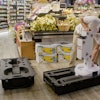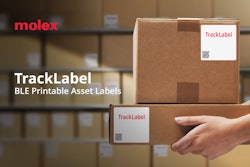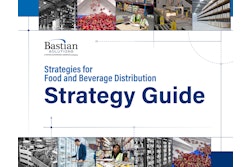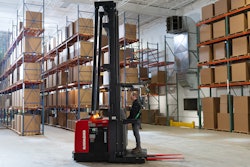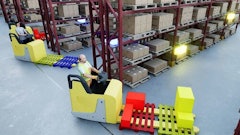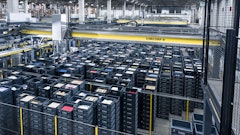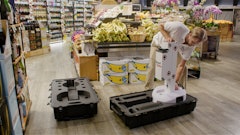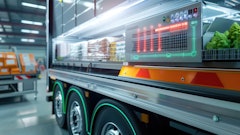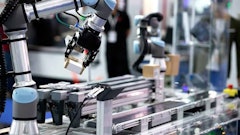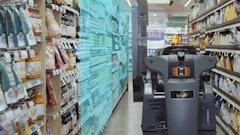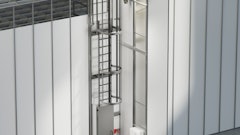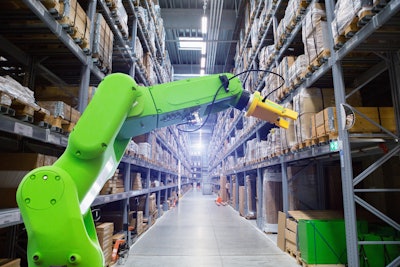
The integration of automation and robotics is continuing to revolutionize packaging in industries such as food, baking and snack, beverage, and other consumer packaged goods (CPG).
In the food and beverage sectors, for example, robots facilitate high-speed packaging, reducing human error while maintaining hygiene standards. For the baking and snack industry, automation helps scale production to meet growing consumer demand while ensuring product consistency. Additionally, advancements in packaging technology — ranging from smart packaging solutions to sustainable materials — enable companies to meet consumer demand for convenience, freshness, and eco-friendliness. As all these technologies continue to evolve, they are transforming the way products are packaged, distributed, and consumed, making supply chains more agile and responsive to market trends, especially in the snack and beverage industries.
For snack food producers, market growth for on-the-go products is fostering innovation in both new products and automation. In fact, it is a top priority for survey participants in the 2024 Snack Foods Packaging Trends report, produced by PMMI, The Association for Packaging and Processing Technologies.
The beverage industry has steady but evolving demand for all types of drinks. Recent trends include the diversification of drink sizes and a shift to glass and cans as the industry seeks alternatives to plastic.
An important factor influencing machinery purchases is productivity, while dealing with the continuing challenge of labor shortages, which is driving interest in automation and robotics. According to 2025 Embracing Operational Readiness, more than three-quarters (78%) of survey participants selected productivity as one of their key priorities, followed by cost and automation (both 47%). While it is not surprising that participants are focused primarily on productivity and cost, the importance they place on automation in manufacturing cannot be underestimated.
More companies are beginning to realize they must balance short-term, tangible benefits, such as cost savings, reduced downtime, and immediate ROI, with long-term advantages, including a scalable, future-proof solution that enhances automation, provides real-time insights, and optimizes production processes.
As a result, there will likely be more requests for end-of-line automation as many companies continue to struggle with retaining labor for production lines, according to PMMI’s 2024 State of the Industry U.S. Packaging Machinery Report.
A recent Packaging World reader survey reports that CPG firms are very interested in adding automation and robotics, with nearly two-thirds of respondents (65%) indicating they would add automation equipment, cobots, or robotics to their packaging operations in the coming year. Why? It all comes back to labor issues. Automation and robotics have evolved to the point where operations can justify that it is more cost-effective over the long term to add these technologies versus the high cost of labor.
For instance, operators in a packaging facility may become tired or bored after hours of repeating the same task, according to the reader survey. This can put them in danger and cause product inconsistency. Automating these tasks often allows workers to move to more interesting, safer jobs, and a more engaged worker is more inclined to like their job and less likely to leave, improving retention rates.
Workforce challenges boost machinery purchases
As labor issues continue, companies are becoming more willing to invest in automation with advanced technologies like AI, machine vision, multi-language HMIs, simplified user interfaces, and visual aids for machine parts. Currently, end-of-line automation is experiencing the most growth, but there is also a demand to automate other parts of the line.
Although fully automated machines may carry a substantial price tag, companies are more willing to invest in reducing their reliance on labor. According to the 2024 report, machine vision can significantly reduce the need for manual labor by automating the process of sorting and placing products into variety packs.
The trend toward automation and reducing manual labor will also drive the need for more sophisticated conveying systems capable of precise product handling, reducing the risk of damage to lightweight and fragile packages. New conveying systems that focus on advanced features, such as automated adjustments, improved tracking, and integration with other automated systems, will become a must.
Consumer demands also drive packaging machinery purchases. As the demand for variety packs continues to rise, companies will likely weigh the benefits of different levels of automation.
The increasing proliferation of SKUs is pushing more companies toward machines that can switch between products and formats with minimal downtime. Additionally, the shift to late-stage customization is causing companies to consider digital printing options that can cost-effectively print the shortest runs.
Harnessing the power of AI
Food, beverage, and other CPG manufacturers are also moving toward AI technology and machine learning. While most projects are in the research and planning stages, many participants in PMMI’s 2024 Transforming Packaging and Processing Operations report want to learn more about it. However, others remain skeptical, commenting that their companies are working on corporate policies and/or still need to understand how to apply AI and ensure information security.
The companies currently employing AI are using it for production demand, planning and forecasting, and data processing and analysis. On the factory floor, AI is used to automate repetitive tasks, control machine vision and quality, perform predictive maintenance, monitor remote services, and manage inventory.
The Transforming Packaging and Processing Operations report identified automation, AI, augmented reality, and virtual reality as pivotal in managing workforce limitations. These technologies can help with predictive and prescriptive maintenance, make processes more efficient, and reduce the reliance on highly specialized staff by providing guidance and training. In fact, one company surveyed has been working with suppliers so that the HMIs on all new machines will contain all the information, tutorials, and videos needed to help on-site technicians perform maintenance.
Adding automation and robotics technologies can now be justified as more cost-effective over the long term when compared to the high cost of labor.


